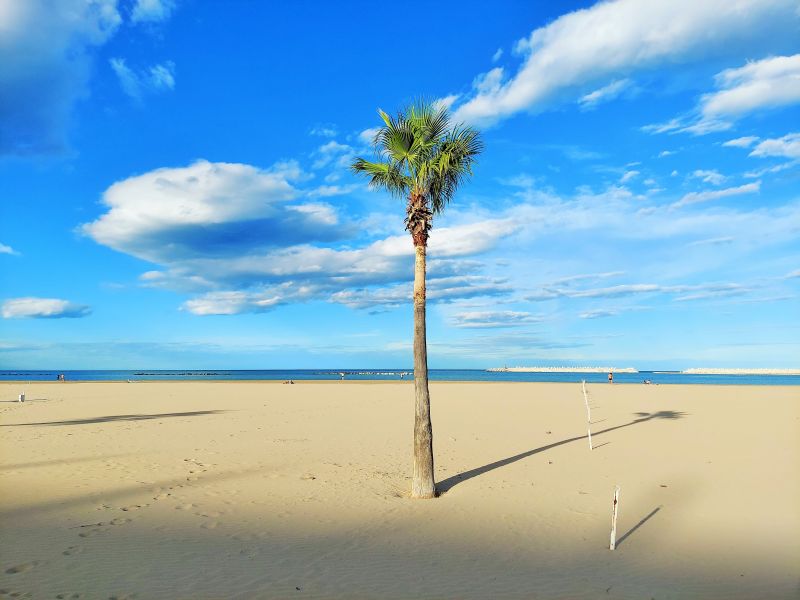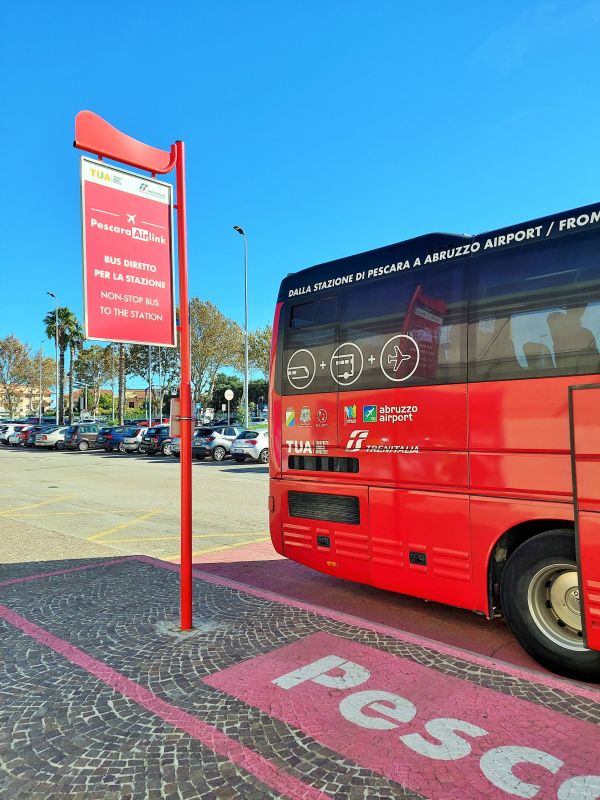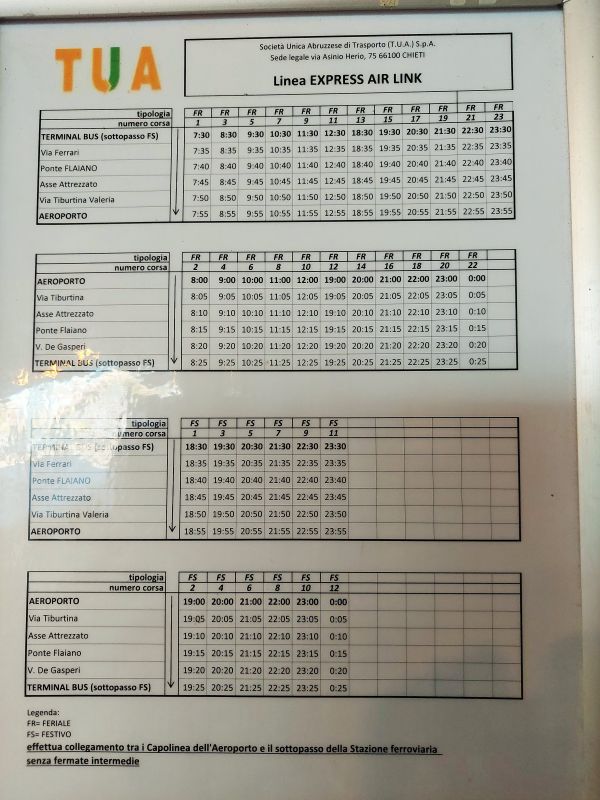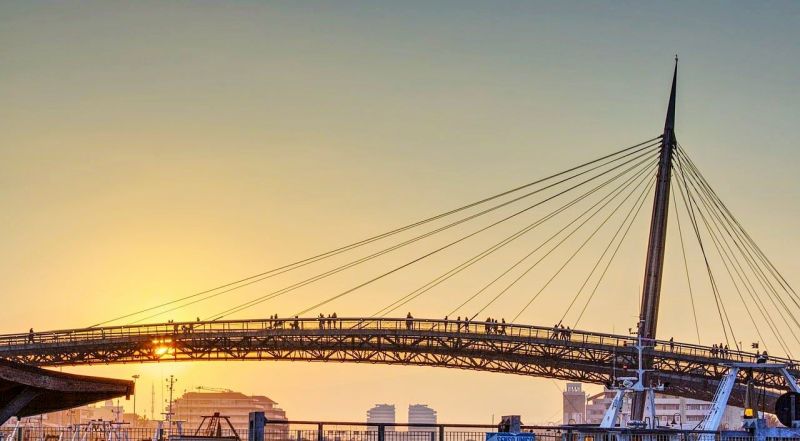Pescara, stretching along the eastern coast of Italy on the Adriatic Sea, is the largest city in the Abruzzo region. Despite this, it is not the capital of the region (which is L’Aquila). Pescara’s history dates back to ancient times. Known then as Aternum, it was an important Roman port. However, it’s difficult to see this long history in its current buildings. The city suffered significant damage during World War II. Quickly rebuilt, it is now a considerable (120,000 inhabitants) and dynamic center with a well-developed industry. Although not as popular as other Italian cities, it has a lot to offer for tourists.
How to get to Pescara
The airport in Pescara is relatively close to the city, and getting to the center is cheap and convenient. The Pescara Airlink bus, which runs from the airport terminal to the Pescara Centrale train station without intermediate stops, is available. The airport stop is well marked. Tickets cost 1.20 euros, and you can buy them in the app (e.g., TUA or Cicero) or in the ticket machine on the bus (then it costs 1.50 euros). According to the timetable, the journey takes 25 minutes, but we traveled in 15 minutes.
Alternatively, you can also reach the city by regular city buses number 8 and 38. The ticket costs the same, but the bus also has intermediate stops. This option is worth considering if you have accommodation near the beach, e.g., in Montesilvano. You can get there directly on one ticket. The bus stop is located opposite the airport, across the street. It’s clearly visible.
Main attractions and monuments
- One of the main reasons to visit Pescara is its beaches. Wide and sandy, they stretch for kilometers. Additionally, there is a promenade along the sea and an adjacent bike path. It’s a great place for walks, where many locals actively spend their time: running or cycling. You will also pass several beautiful fountains. The tourist infrastructure is well developed. It is worth going all the way to Montesilvano to admire the beautiful villas built on Vialle della Riviera.
- Very interesting landmark is undoubtedly the Sea Bridge (Ponte del Mare). This impressive structure consists of two separate paths: one for pedestrians and another for cyclists. It is 465 meters long and is the longest bridge of its kind in Italy.
- The Cathedral of San Cetteo was built in the 20th century and is dedicated to the city’s patron saint, St. Cetteo, a martyr who died in the 3rd or 4th century. The cathedral’s construction was strongly supported by Gabriele D’Annunzio. This controversial politician, poet, and writer was born in Pescara. There is now a museum dedicated to him in his former house. Those who have been to Lake Garda may recognize him from his extravagant villa and park in Gardone Riviera.
- Piazza Salotto is not famous for outstanding monuments, but it is the heart of the city. Located on the route from the railway station to the sea, this large square is a meeting place, especially for culinary gatherings, as there are many restaurants and bars.
Pescara – what it is famous for
- Pescara Jazz – an International Jazz Festival takes place here every July.
- Wine Festival – the Pescara Wine Festival is held in November. You can taste exquisite local wines, such as red Montepulciano d’Abruzzo.
- Cuisine – it’s worth trying local dishes. Some of them include Arrosticini – skewers of lamb or mutton meat, Brodetto alla Pescarese – a thick fish soup with dried sweet pepper, and Spaghetti alla chitarra – pasta similar to spaghetti, made using a device with metal strings, resembling a guitar, which gives the pasta a rough surface that adheres well to traditional meat and tomato-based sauces.
If you are wondering what you can see around Pescara, check out my articles on Punta Aderci and Termoli.



